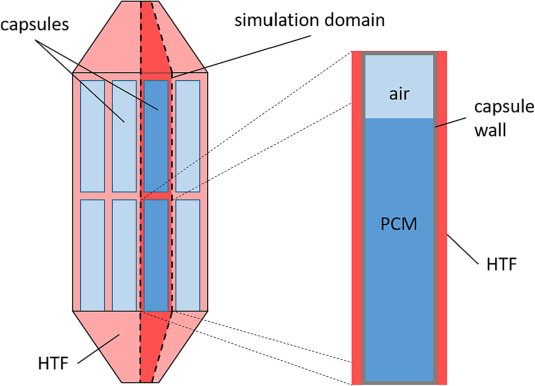Macro-encapsulation of phase change material (PCM) is a promising approach to overcome a serious drawback of many latent heat thermal energy storage systems (LHTESSs): their low thermal power. Simulations are often used to support the design of these storage systems, but the simulation of the charging process of such an LHTESS with detailed CFD models is too computationally expensive. To obtain information about the behavior of a complete LHTESS, highly simplified system simulation models are usually applied. A new approach to create a reduced-order model is herein presented that aims to increase the accuracy of these system simulation models. The first step consists of performing a set of detailed CFD simulations of one capsule with different boundary conditions. The results are written into look-up tables that contain the charging power of one capsule as a function of the enthalpy stored and the boundary conditions. These look-up tables are then implemented into the reduced-order model. The temporal mean deviation of the energy content in the storage unit between experiments and the reduced-order model is only 5 % and the simulation time of the fastest reduced-order model was 5 s, while the CFD simulations took up to about two weeks on a workstation. Finally, for the conditions tested, the heat transfer fluid (HTF) does not have to be included in the CFD simulation, but can be replaced by a properly defined convective boundary condition. The capsule wall, however, needs to be included in the CFD model (especially for capsule wall materials with a distinctively higher thermal conductivity than the PCM) to account for the heat flow towards the bottom of the capsule supporting close contact melting.
https://www.sciencedirect.com/science/article/pii/S2352152X23026336

